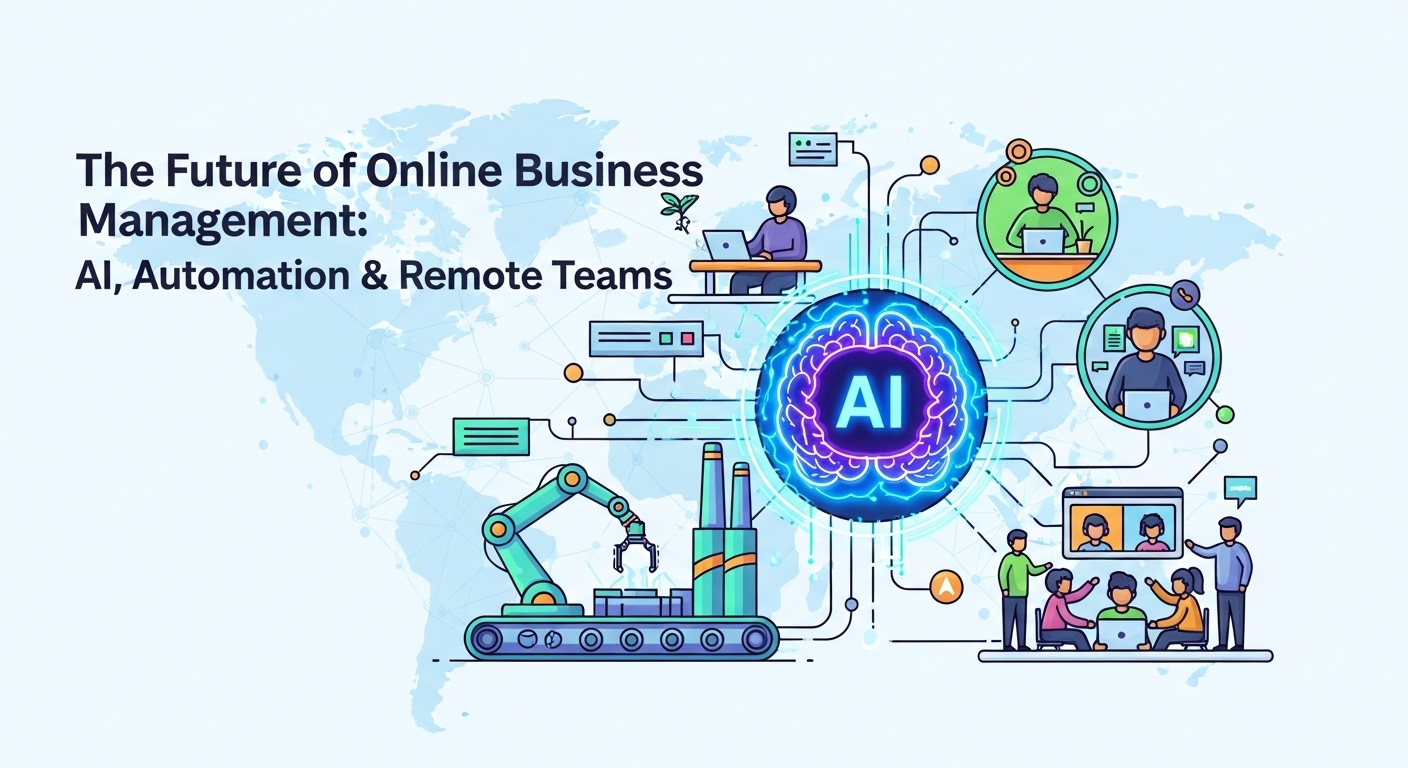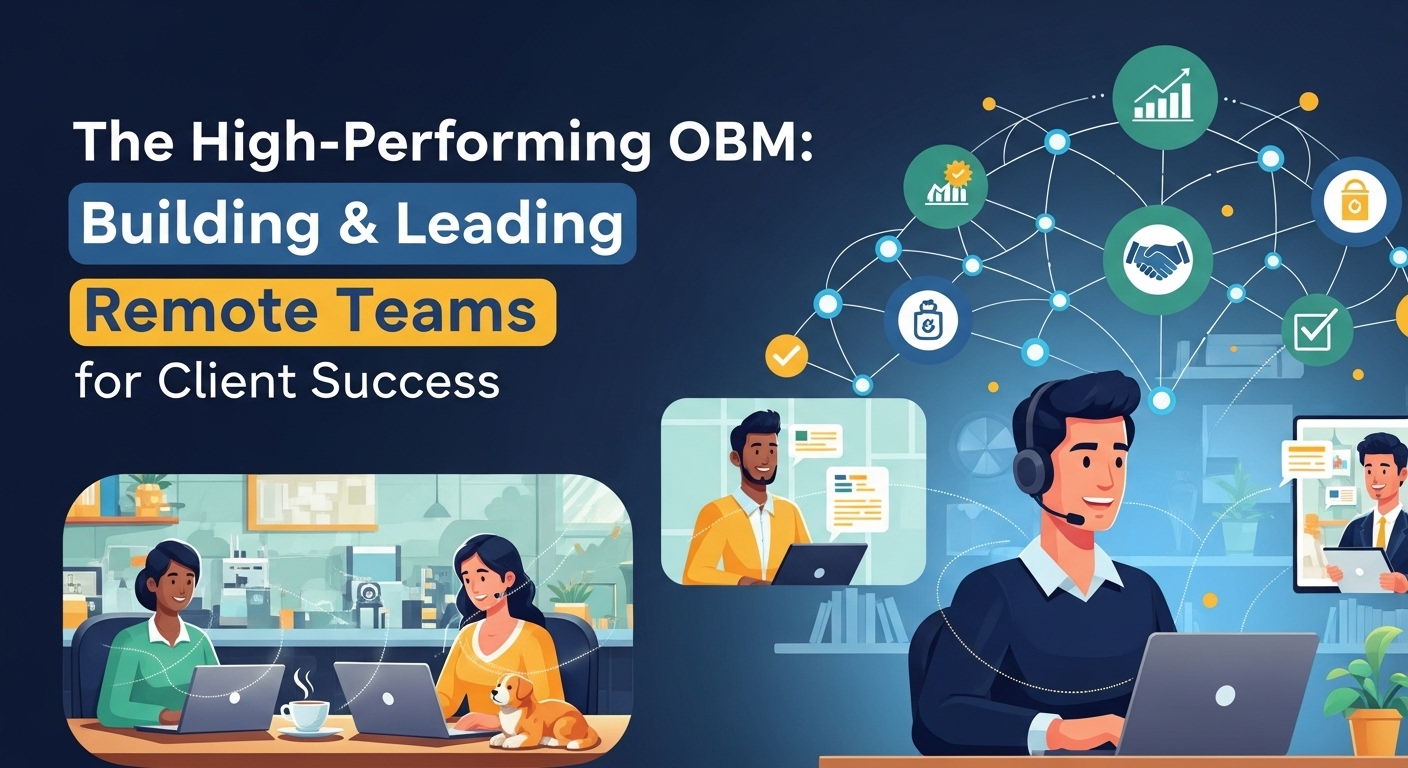The Shifting Tides of Digital Business
In the ever-evolving landscape of digital enterprise, the one constant is change. Business owners are juggling more than ever before, from marketing and sales to operations and team leadership. This is where the crucial role of an Online Business Manager (OBM) comes into play. But the role itself is undergoing a radical transformation. What worked five years ago is now just the baseline. The future of online business management is not about just managing tasks; it’s about pioneering strategy, leveraging technology, and leading with foresight. If you’re a business owner looking to scale or an OBM aiming to stay ahead of the curve, understanding the coming trends is not just beneficial—it’s essential for survival and success.
We’re standing at the intersection of human ingenuity and technological prowess. Trends like Artificial Intelligence (AI), deep automation, and the mastery of remote team dynamics are no longer buzzwords; they are the core pillars of modern operational excellence. This article dives deep into the forces shaping the next generation of online business management, providing a roadmap for what to expect and how to prepare.
What is Online Business Management, Really?
Before we leap into the future, let’s ground ourselves in the present. What exactly is the function of an OBM? Many people confuse an Online Business Manager with a Virtual Assistant (VA), but their roles are fundamentally different. A VA is typically a task-doer, executing specific instructions. An OBM, on the other hand, is a strategic partner.
Beyond a Virtual Assistant
Think of it this way: you tell a VA what to do. You tell an OBM what you want to achieve. The OBM then figures out the ‘how,’ creating the systems, managing the projects, and leading the team to get it done. They are the operational brain of the business, freeing up the visionary CEO to focus on growth, innovation, and big-picture thinking. An OBM manages the day-to-day operations, ensuring the business runs smoothly and efficiently without the CEO’s constant intervention.
The Strategic Integrator
A great OBM doesn’t just manage; they integrate. They connect the dots between different departments, projects, and people. They analyze performance metrics, identify bottlenecks, and proactively propose solutions. Their primary goal is to ensure that all the moving parts of the business are working in harmony to achieve the overarching company vision. This strategic oversight is the hallmark of effective online business management.
Trend 1: The AI Revolution in OBM
Artificial Intelligence is arguably the most significant technological shift of our time, and its impact on online business management is profound. Far from replacing the OBM, AI is becoming their most powerful tool, augmenting their capabilities and allowing them to provide even greater value.
Automating the Mundane, Amplifying the Strategic
Every business has a host of repetitive, time-consuming tasks. Think email filtering, scheduling meetings across time zones, transcribing calls, or generating basic reports. AI tools can now handle these with incredible efficiency. An OBM can set up AI-powered systems that automate these processes, freeing up dozens of hours per month. This reclaimed time can then be reinvested into higher-value activities like strategic planning, team development, and process optimization.
Data-Driven Decision Making
Gut feeling has its place, but data provides the map. AI excels at analyzing vast amounts of data to uncover patterns and insights that a human might miss. An OBM can leverage AI tools to:
- Analyze marketing campaign performance to identify the most profitable channels.
- Forecast sales trends based on historical data and market conditions.
- Monitor team productivity metrics to pinpoint areas for improvement.
- Gauge customer sentiment by analyzing feedback and reviews.
By harnessing AI for analytics, the OBM transforms from a manager into a data-informed strategist, making recommendations backed by concrete evidence.
Trend 2: Hyper-Automation is the New Standard
If AI is the brain, hyper-automation is the central nervous system connecting every part of the business. This trend goes beyond automating single tasks; it’s about creating seamless, interconnected workflows across multiple platforms and applications. The goal is to build a business that practically runs itself in key operational areas.
Connecting Your Entire Tech Stack
Modern businesses rely on a suite of tools—a CRM, a project management platform, accounting software, communication channels, and more. Hyper-automation, using platforms like Zapier, Make (formerly Integromat), or custom API integrations, allows an OBM to make these tools ‘talk’ to each other. For example:
- When a new client signs a contract in your CRM, a project is automatically created in Asana, an invoice is generated in QuickBooks, and a welcome sequence is triggered in your email marketing software.
- When a team member marks a major task as complete, a notification is automatically sent to the relevant Slack channel and the project timeline is updated.
This level of integration eliminates manual data entry, reduces the risk of human error, and dramatically speeds up processes.
Streamlining Project and Financial Management
Effective online business management hinges on flawless project execution and healthy finances. Hyper-automation brings a new level of sophistication to both. In project management, automated workflows can assign tasks, send reminders, and escalate issues when deadlines are at risk. In finance, systems can be built to automatically chase late payments, categorize expenses from bank feeds, and generate monthly profit and loss statements, giving the business owner a real-time view of financial health without the manual number-crunching.
Trend 3: Mastering the Art of Managing Remote & Hybrid Teams
The global shift to remote work is here to stay. This presents a unique set of challenges and opportunities for OBMs, who are often at the heart of managing distributed teams. The future-focused OBM is not just proficient with remote tools; they are a master of remote leadership and culture-building.
Building a Digital Headquarters
Without a physical office, the OBM is responsible for creating a ‘digital headquarters’—a centralized, organized, and accessible online workspace. This involves more than just picking the right tools like Slack, Notion, or ClickUp. It requires establishing clear communication protocols, creating a comprehensive knowledge base, and ensuring that every team member, regardless of their location, knows where to find information and how to collaborate effectively.
Fostering a Thriving Remote Culture
Company culture can easily wither in a remote setting without deliberate effort. The OBM of the future plays a key role as a culture champion. This involves:
- Organizing virtual team-building activities that are genuinely engaging.
- Creating systems for public recognition and celebrating wins.
- Championing asynchronous communication to respect different time zones and work styles.
- Encouraging open feedback and psychological safety within the team.
Performance Management Based on Outcomes
Managing a remote team requires a shift from monitoring activity to measuring results. An adept OBM focuses on outcomes, not hours logged. They work with the CEO to establish clear Key Performance Indicators (KPIs) for each role and create systems for tracking progress. This approach builds trust, empowers team members to manage their own time, and ensures that everyone is aligned and accountable for their contribution to the company’s goals.
Ready to Future-Proof Your Business with Next-Gen OBM?
The world of online business management is accelerating. The integration of AI, the push for hyper-automation, and the complexities of leading remote teams are not just passing fads—they are the new foundation of operational excellence. For business owners, this means the value of a forward-thinking OBM has never been higher. A strategic manager who can harness these trends will not just organize your business; they will optimize it, innovate it, and prepare it for sustainable growth.
If you’re feeling overwhelmed by the pace of change, you’re not alone. The key is to take the first step. Whether you’re a CEO looking to hire a strategic partner or an OBM aiming to level up your skills, embracing this future is your path to greater impact and success. Start by identifying one area—be it task automation or remote communication protocols—and begin implementing these future-focused strategies today. Your business tomorrow will thank you for it.


